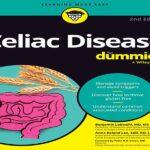- عنوان کتاب: Pediatric Management of Autism
- نویسنده: Paul H. Lipkin, MD
- حوزه: اوتیسم
- سال انتشار: 2024
- تعداد صفحه: 243
- زبان اصلی: انگلیسی
- نوع فایل: pdf
- حجم فایل: 5.93 مگابایت
اوتیسم یکی از شایعترین بیماریهای بهداشتی در اطفال عمومی است که تنها با آسم، مشکلات استخوانی، مفصلی یا عضلانی و سایر بیماریهای عصبی رشدی و رفتاری پیشی میگیرد. با این حال، وجود خود را به عنوان یک موجودیت بالینی در حوزه پزشکی روانپزشکی آغاز کرد. در حالی که توضیحات اولیه دیگری وجود دارد، این روایت روانپزشکی به نام لئو کانر در جانز هاپکینز بود که آگاهی و خط تحقیقات اوتیسم را برانگیخت که به آنچه امروز است تبدیل شد. تا اواخر قرن بیستم بود که اساس عصبی این بیماری بهتر مورد توجه قرار گرفت و طیف پزشکان درگیر در اوتیسم را متنوع کرد. علاقه کودکان به مراقبت و مدیریت کودکان مبتلا به اوتیسم در دهه 1990 با ظهور متخصصان رشد عصبی و رشدی-رفتاری شتاب گرفت. شیوع بالای اوتیسم در سلامت کودکان با ایجاد شبکه نظارت بر اوتیسم و ناتوانی های رشدی (ADDM) مرکز کنترل و پیشگیری از بیماری ها در سال 2000 برجسته شد، در آن زمان تصور می شد که اوتیسم از هر 150 کودک یک نفر را تحت تاثیر قرار می دهد. برآوردهای کنونی از ADDM اکنون شیوع آن را تقریباً یک کودک از هر 36 کودک نشان میدهد که بر همه گروههای نژادی، قومی، و اجتماعی-اقتصادی تأثیر میگذارد، به طوری که برای هر دختر چهار پسر تحت تأثیر قرار میگیرند. با توجه به شیوع بالای اوتیسم و محدودیت های نیروی کار در میان متخصصان روانپزشکی، اطفال و اعصاب، پزشک عمومی اطفال اکنون وظیفه غربالگری این اختلال و اطمینان از ارزیابی و تشخیص هر کودک را بر عهده دارد. آنها همچنین اکنون مسئولیت نظارت و مدیریت طولانی مدت برای کودک در خانه مراقبت های اولیه کودکان را بر عهده می گیرند. با این شماره از کلینیک های اطفال آمریکای شمالی، هدف ما ارائه گام های عملی به متخصص عمومی اطفال است که بتواند به کودک مبتلا به اوتیسم ارائه دهد و از نیازهای پزشکی، اجتماعی و مشارکت اجتماعی آنها از دوران کودکی تا انتقال به مراقبت بزرگسالان حمایت کند. . ما گروهی از متخصصان اطفال و مرتبط در مراقبت از کودکان مبتلا به اوتیسم را از سراسر ایالات متحده دعوت کردهایم تا مجموعهای از بررسیها را بنویسند که نیازهای بسیاری از کودک اوتیسمی را مشخص میکند و همچنین جعبه ابزاری برای ارزیابی و ارزیابی مؤثر در اختیار پزشک متخصص اطفال قرار میدهد. مراحل مداخله مقالات بر اساس گاهشماری دوران کودکی مرتب شدهاند، ابتدا با دیدگاههای اساسی بهداشت عمومی و زیستپزشکی در مورد اوتیسم، سپس مقالات اختصاص داده شده به دوران اولیه کودکی (مانند غربالگری، تشخیص)، سالهای مدرسه و شرایط پزشکی مرتبط (مثلاً خانه). و نیازهای مدرسه، صرع، خواب، روان دارویی)، و سپس سال های نوجوانی با انتقال به مراقبت بزرگسالان. در آثار مربوط به اوتیسم معمول است که ویراستاران یادداشت هایی درباره اصطلاحات مورد استفاده برای برچسب زدن به این بیماری و افرادی که تحت تأثیر آن قرار می گیرند، با توجه به بحث های اغلب داغ در مورد اصطلاحات ارائه کنند. رویکرد ما بهعنوان ویراستاران این شماره این بوده است که دستی سبک بگیریم و اجازه دهیم نویسندگان خودشان صحبت کنند. با این حال، تکامل زبان، بحثهایی که این تحول را پیش میبرند، و اولویتبندیهای متفاوتی که در آن بحثها منعکس میشود، باید برای پزشک آموزنده باشد. به عبارت دیگر، در حالی که برخی از بیماریهای پزشکی و روانشناختی همراه اوتیسم به دلیل ایجاد پریشانی (مثلاً اضطراب و اختلال خواب) یا خطرات ایمنی (مانند صرع، افسردگی و رفتار مضر) نیاز به مداخله دارند، بسیاری از ویژگیهای این بیماری ذاتاً آزاردهنده نیستند. یا خطرناک برای فرد و در نتیجه ایجاد ناتوانی در درجه اول از طریق تعامل بین فرد و محیط است. به هر حال، تشخیصهای رشدی، ساختارهای جامعهشناختی هستند، و در حالی که طرفهای مخالف در بحثهای زبانی هر نسلی ممکن است اولویتهای متفاوتی داشته باشند، هر جهش تکاملی در زبان، جنبه جدیدی از درک و حمایت را منعکس میکند. به عنوان مثال، زبان اول شخص (به عنوان مثال، “کودک مبتلا به اوتیسم”) برای برجسته کردن فردیت همه افراد اوتیستیک در نظر گرفته شده است – که آنها را نمی توان و نباید صرفاً به تشخیص آنها تقلیل داد. گرایش جدیدتر به سمت زبان اول هویت (مثلاً «نوجوان اوتیستیک») به نوعی نشاندهنده احیای و غیرپزشکی کردن این اصطلاح و همچنین سازماندهی رو به رشدی از طرفداران خود است که با هدف ایجاد یک محیط اجتماعی با استقبال بیشتر از و پذیرش افراد اوتیستیک اخیراً، جنبشی برای تعریف ساختار اوتیسم عمیق وجود داشته است که نشان دهنده این نگرانی است که کسانی که بیشترین نیاز به حمایت و کمترین فرصت برای برقراری ارتباط با خواسته های خود را دارند، ممکن است اولویت های مشابهی با طرفداران خود نداشته باشند. اصطلاح «وضعیت طیف اوتیسم» که در بریتانیا رایج است، با راهنمای تشخیصی و آماری اختلالات روانی (ویرایش پنجم) تشخیص «اختلال طیف اوتیسم» در تضاد است، هم با غیرپزشکی کردن اصطلاحات و هم تأکید بر اینکه تشخیص ممکن است برای برخی مادام العمر نباشد.
Autism is among the most common health conditions in general pediatrics, surpassed only by asthma, bone, joint, or muscle problems, and other neurodevelopmental and behavioral conditions. However, it began its existence as a clinical entity within the medical field of psychiatry. While other early descriptions exist, it was the account of a psychiatrist, Leo Kanner at Johns Hopkins, that ignited awareness and the line of autism research that evolved to what it is today. It was not until later in the twentieth century that the neurologic basis of the condition was better appreciated, diversifying the range of clinicians involved in autism. Pediatric interest in the care and management of children with autism accelerated in the 1990s with the rise of neurodevelopmental and developmental-behavioral specialists. Autism’s high prevalence in child health was highlighted with the creation of the Autism and Developmental Disabilities Monitoring (ADDM) Network of the Centers for Disease Control and Prevention in 2000, at which time autism was thought to affect one in every 150 children. Current estimates from ADDM now put its prevalence at approximately one in 36 children, affecting all racial, ethnic, and socioeconomic groups, with four boys affected to every girl. Given autism’s high prevalence and workforce limitations among psychiatric, pediatric, and neurologic specialists, the general pediatric clinician is now charged with screening for this disorder and assuring each child gets evaluated and diagnosed. They also now assume long-term monitoring and management responsibilities for the child within the primary care pediatric home. With this issue of Pediatric Clinics of North America, our aim is to provide the pediatric generalist with actionable steps that they can deliver to the child with autism, supporting their medical, social, and community- participation needs from early childhood through transition to adult care. We have invited a group of pediatric and related experts in the care of children with autism from throughout the United States to write a collection of reviews outlining the many needs of the autistic child as well as providing the pediatric clinician with a toolbox of effective assessment and intervention steps. The articles are ordered across the chronology of childhood, beginning first with fundamental public health and biomedical perspectives on autism, followed by articles dedicated to early childhood (eg, screening, diagnosis), the school-aged years and associated medical conditions (eg, home and school needs, epilepsy, sleep, psychopharmacology), and then the teen years with transition to adult care. It is typical in works about autism for editors to provide notes about the terms used to label the condition and the individuals affected by it, given the often-heated debates about terminology. Our approach as editors of this issue has been to take a light hand and to let the authors speak for themselves. However, the evolution of the language, the debates that drive this evolution, and the differing prioritizations reflected in those debates should be instructive to the clinician. Namely, while some medical and psychological comorbidities of autism demand intervention because they create distress (eg, anxiety and sleep dysfunction) or safety risks (eg, epilepsy, depression, and harmful behavior), many features of the condition are not inherently distress-inducing or dangerous for the individual and therefore create disability primarily through the interactions between the individual and environment. Developmental diagnoses are, after all, sociologic constructs, and while opposing parties to the language debates of any generation may have differing priorities, each evolutionary leap in language reflects a new facet of understanding and support. For examples, person-first language (eg, “the child with autism”) was intended to highlight the individuality of all autistic individuals— that they cannot and should not be reduced simply to their diagnosis. A more recent trend toward identity-first language (eg, “the autistic teenager”) reflects, in a sense, a reclamation and demedicalization of the term as well as a growing organization of self-advocates aiming to create a social environment more welcoming to and accommodating of autistic individuals. Very recently, there has been a movement to define the construct of profound autism, reflecting concerns that those with the greatest support needs and least opportunity to communicate their desires may not share the same priorities as self-advocates who do have. The term “Autism Spectrum Condition,” common in the United Kingdom, contrasts with the Diagnostic and Statistical Manual of Mental Disorders (Fifth Edition) diagnosis of “Autism Spectrum Disorder,” by both demedicalizing the terminology and highlighting that the diagnosis may not be lifelong for some.
این کتاب را میتوانید بصورت رایگان از لینک زیر دانلود نمایید.
Download: Pediatric Management of Autism




































نظرات کاربران